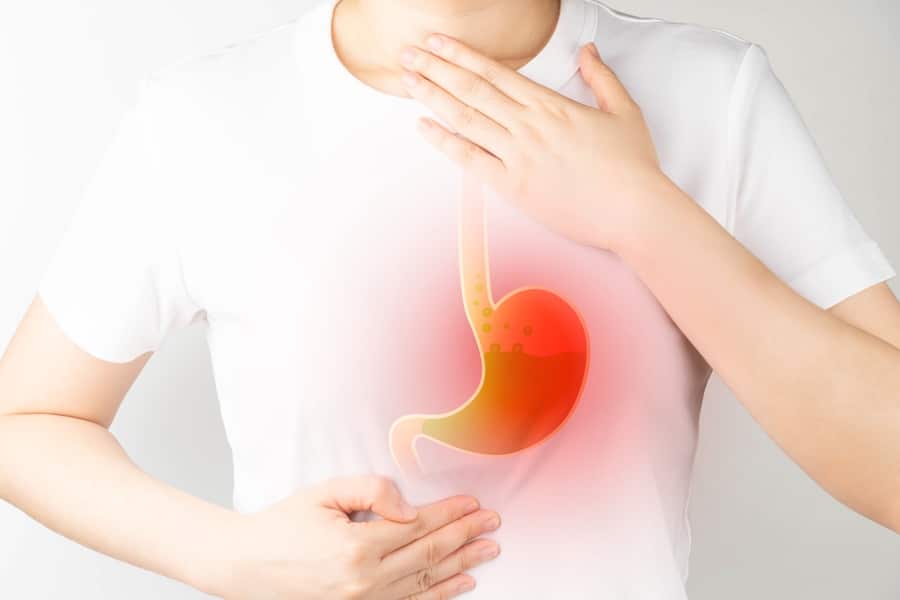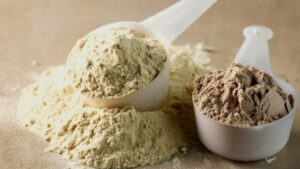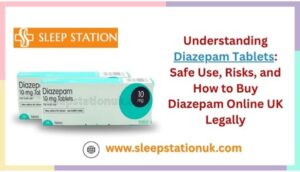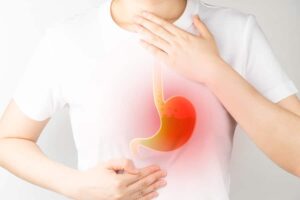
You’ve tried eliminating trigger foods, elevating your bed, and taking over-the-counter antacids, yet troublesome symptoms persist. Or perhaps you’ve been prescribed medication that doesn’t seem to be working as expected. At what point does acid reflux warrant formal testing beyond clinical diagnosis? Many people struggle with this question, uncertain whether their symptoms justify diagnostic procedures or if they should continue trying different management approaches. Understanding when reflux testing provides valuable information—and when it’s unnecessary—empowers you to make informed decisions about your care, potentially uncovering underlying issues that explain persistent symptoms and guiding more effective treatment strategies.
When Clinical Diagnosis Is Sufficient
Many cases of gastro-oesophageal reflux disease (GERD) are diagnosed and successfully managed based on symptoms alone, without requiring formal testing. This approach, called empirical diagnosis, works well when symptoms clearly indicate reflux and respond predictably to treatment.
Classic symptoms including heartburn and regurgitation occurring after meals or when lying down, particularly if they improve with acid-reducing medications, often don’t require testing. If lifestyle modifications and appropriate medication provide adequate relief, formal diagnostic procedures add little value.
Uncomplicated cases in younger individuals without alarm symptoms typically receive trial treatment before considering testing. Many people achieve excellent symptom control through this straightforward approach, making diagnostic procedures unnecessary.
However, this empirical approach has limitations. Without objective testing, you can’t confirm whether symptoms truly stem from acid reflux, assess reflux severity, identify complications, or determine whether treatment effectively reduces acid exposure despite persistent symptoms.
Situations Warranting Reflux Testing
Specific circumstances indicate that diagnostic testing would provide valuable information guiding treatment decisions and identifying potential complications.
Atypical or Unclear Symptoms
When symptoms don’t follow typical reflux patterns—such as chronic cough, hoarseness, chest pain, or throat discomfort without heartburn—testing helps determine whether reflux actually causes these complaints. Many conditions mimic reflux symptoms, and testing distinguishes reflux from other disorders requiring different treatments.
Inadequate Response to Treatment
If you’ve tried appropriate acid-suppressing medications for 8-12 weeks without adequate improvement, testing can reveal whether reflux is truly controlled or if symptoms persist despite adequate acid suppression. This distinction fundamentally changes management approaches.
Sometimes symptoms continue not because reflux persists but because acid suppression doesn’t address the actual problem—perhaps a different condition altogether, or non-acid reflux that standard medications don’t prevent.
Suspected Complications
Long-standing reflux can cause complications including oesophageal erosion, strictures (narrowing), or Barrett’s oesophagus (precancerous changes). Testing identifies these complications, guiding appropriate monitoring and treatment intensification.
Pre-Surgical Evaluation
Before considering anti-reflux surgery, comprehensive testing objectively confirms reflux diagnosis, quantifies severity, and assesses whether symptoms truly correlate with reflux episodes. This information helps determine surgical candidacy and predicts likely outcomes.
Monitoring Treatment Effectiveness
After starting treatment or undergoing procedures, testing can objectively demonstrate whether reflux has been adequately controlled, particularly important when symptoms don’t reliably reflect actual acid exposure.
For those requiring comprehensive assessment, advanced diagnostic procedures including acid reflux test options provide detailed information about reflux patterns, severity, and symptom correlation over extended monitoring periods.
Types of Reflux Testing
Several diagnostic procedures assess different aspects of reflux, each providing unique information.
Upper Endoscopy (Gastroscopy)
This procedure involves passing a thin, flexible tube with a camera through your mouth to directly visualise your oesophagus, stomach, and upper small intestine. Endoscopy identifies inflammation, erosions, strictures, hernias, Barrett’s oesophagus, or other structural abnormalities.
Importantly, endoscopy can appear completely normal in many people with significant reflux symptoms. Normal endoscopy doesn’t exclude reflux—it simply indicates absence of visible damage. This limitation makes endoscopy valuable for identifying complications but less useful for confirming or excluding reflux diagnosis.
24-Hour pH Monitoring
This test measures acid levels in your oesophagus over 24 hours, documenting how often reflux occurs, when it happens, and whether symptoms correlate with acid exposure episodes. A thin probe placed through your nose into your oesophagus transmits data to a recorder you wear.
pH monitoring objectively quantifies reflux severity and establishes definitive diagnosis when symptoms are atypical or diagnosis is uncertain. It’s particularly valuable when considering surgery or when symptoms persist despite medication.
Wireless pH Monitoring
A capsule temporarily attached to your oesophageal wall wirelessly transmits pH data to a receiver you wear, eliminating the nasal tube required for traditional monitoring. The capsule falls off after several days and passes harmlessly through your digestive system.
This approach allows longer monitoring periods (48-96 hours) and greater comfort, though it costs more and isn’t universally available.
pH-Impedance Monitoring
This advanced test detects both acidic and non-acidic reflux by measuring changes in electrical resistance as liquid or gas moves through the oesophagus. It identifies reflux episodes regardless of acid content, particularly valuable for people with persistent symptoms despite acid-suppressing medication.
pH-impedance distinguishes between inadequate acid suppression versus non-acid reflux, fundamentally different problems requiring different management approaches.
Oesophageal Manometry
Whilst not directly testing for reflux, manometry measures oesophageal muscle function and lower oesophageal sphincter pressure. This information helps identify motility disorders that might explain symptoms or influence treatment decisions, particularly when considering surgery.
Barium Swallow
This X-ray study watches barium contrast flow through your oesophagus and stomach, identifying structural abnormalities including hiatus hernia, strictures, or motility problems. However, it doesn’t reliably diagnose reflux itself—many people with significant reflux show normal barium studies.
Preparing for Reflux Testing
If you’re scheduled for reflux testing, specific preparations optimise results and diagnostic accuracy.
For endoscopy, you’ll fast for 6-8 hours beforehand. Your healthcare provider will advise whether to continue or temporarily stop certain medications. Arrange transportation home, as sedation used during endoscopy prevents driving.
For pH monitoring studies, acid-suppressing medications are typically stopped several days before testing (following your doctor’s specific instructions). This allows measurement of your natural reflux pattern. You’ll maintain a symptom diary during monitoring, noting when symptoms occur and what activities you’re performing.
Continue normal daily activities during ambulatory monitoring to capture realistic reflux patterns. Avoid activities that might dislodge equipment, but otherwise maintain usual routines including typical meals and sleep patterns.
Understanding Your Results
Test results provide objective data, but interpretation requires expertise considering your specific symptoms, medical history, and treatment goals.
Positive findings confirming excessive acid exposure or visible oesophageal damage validate your symptoms and justify treatment intensification. However, the goal isn’t just reducing acid exposure—it’s achieving symptom relief and preventing complications.
Normal results don’t necessarily mean you’re imagining symptoms. They might indicate adequate treatment control, non-acid reflux, functional disorders, or alternative diagnoses requiring different approaches. Discuss implications thoroughly with your healthcare provider.
Symptom correlation proves particularly important. If testing demonstrates reflux episodes that consistently coincide with your symptoms, causation is likely. Conversely, if symptoms occur without corresponding reflux episodes, alternative explanations warrant investigation.
FAQ Section
How much does reflux testing cost?
Costs vary significantly by location, healthcare system, and specific test performed. Endoscopy typically costs £500-1,500 privately in the UK, whilst pH monitoring ranges £800-2,000. NHS patients usually receive testing without direct charges when clinically indicated. Insurance coverage varies—check with your provider regarding specific procedures and requirements.
Is reflux testing painful or uncomfortable?
Endoscopy performed with sedation causes minimal discomfort and most people don’t remember the procedure. Traditional pH monitoring involves some throat discomfort from the nasal tube, but most people tolerate it reasonably well. Wireless capsule placement requires brief endoscopy but eliminates prolonged tube discomfort. Overall, whilst not pleasant, these procedures are generally well-tolerated.
Can I eat normally during pH monitoring?
Yes, maintaining your usual diet during monitoring is actually important for capturing realistic reflux patterns. You’ll record meals in your symptom diary, helping correlate reflux episodes with dietary intake. Avoid only activities that might dislodge equipment.
Will testing tell me exactly what foods to avoid?
Testing doesn’t identify specific food triggers. It measures reflux patterns and symptom correlation but doesn’t test individual food responses. Food trigger identification still requires systematic elimination and reintroduction guided by symptom patterns.
Do I need testing if medication works well for me?
Probably not. If empirical treatment provides excellent symptom control without concerning features, testing adds little value. However, if you’ve been on medication long-term or plan to discontinue it, testing might assess whether underlying reflux has improved or whether medication remains necessary.
Conclusion
Reflux testing isn’t necessary for everyone with heartburn or regurgitation. Many cases respond well to empirical treatment without requiring diagnostic procedures. However, when symptoms are atypical, treatment proves ineffective, complications are suspected, or surgery is considered, objective testing provides invaluable information guiding optimal management. Understanding when testing adds value versus when it’s unnecessary helps you advocate for appropriate care whilst avoiding unnecessary procedures. If you’re uncertain whether your situation warrants formal testing, discuss your specific symptoms, treatment response, and concerns with your healthcare provider. Together, you can determine whether diagnostic procedures would provide information meaningfully influencing your treatment plan and outcomes, or whether continuing current management approaches makes more sense for your individual circumstances.






